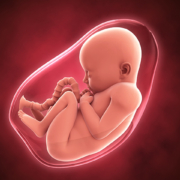Rare Pregnancy Complications
Most pregnancies progress normally without complications while other pregnancies occur with rare complications that interfere with normal fetal development. These may be related to a genetic disorder, problems with the fetus’s chromosomes, or abnormal placental development. Sometimes, diseases or conditions the mother had before she became pregnant can lead to complications during pregnancy. Identical twin pregnancies can also be susceptible to issues related to the sharing of a single placenta and common blood vessels.
A few women experienced very unusual complications in pregnancy, sometimes with a risk of stillbirth. Even with complications, early detection and prenatal care can reduce any further risk to you and your baby.
7 of the rarest complications of pregnancy include:
Lower Urinary Tract Obstruction (LUTO) is A rare birth defect in which the fetus has a blockage in the urethra, the tube that carries urine out of the baby’s bladder and into the amniotic sac. LUTO is also known as bladder outlet obstruction.
Fetal Hydrothorax is when abnormal amounts of fluid from within the chest of a fetus. This fluid may be in the space between the lungs and the chest wall (pleural space) or within the core of the lung or chest masses. Fetal hydrothorax may also be referred to as a pleural effusion.
Twin Reversed Arterial Perfusion (TRAP) is a rare condition of monochorionic twin pregnancies. It arises when the cardiac system of one twin does the work of supplying blood for both twins. The twin supplying the blood is known as the “pump twin” and develops normally in the womb.
Twin-to-Twin Transfusion Syndrome (TTTS)
is a rare pregnancy condition affecting identical twins or other multiples. TTTS occurs in pregnancies where twins share one placenta (afterbirth) and a network of blood vessels that supply oxygen and nutrients essential for development in the womb.
Twin Anemia Polycythemia Sequence (TAPS) is a rare but severe complication in identical twin pregnancies that share a single placenta (monochorionic). TAPS is caused by an imbalance in red blood cells exchanged between the twins through tiny placental blood circulations (anastomoses).
Congenital Diaphragmatic Hernia is a birth defect where there is a hole in the diaphragm (the large muscle that separates the chest from the abdomen). Organs in the abdomen (such as intestines, stomach, and liver) can move through the hole in the diaphragm and upwards into a baby’s chest.
Selective Intrauterine Growth Restriction is a condition that can occur in some identical twin pregnancies. These pregnancies are known as monochorionic, which means the twins share a placenta (afterbirth) and a network of blood vessels.
Treatments and procedures during labor and delivery
Sometimes the vaginal opening does not stretch enough for the baby’s head. In this case, an episiotomy aids your healthcare provider in delivering your baby. An episiotomy makes the opening of the vagina a bit wider, allowing the baby to come through it more easily. Sometimes a woman’s perineum may tear as their baby comes out. In some births, an episiotomy can help to prevent a severe tear or speed up delivery if the baby needs to be born quickly. Normally, once the baby’s head is seen, your healthcare provider will ease your baby’s head and chin out of your vagina. Once the baby’s head is out, the shoulders and the rest of the body follow.
Doctors will perform a cesarean when the low-lying placenta partially or completely covers the cervix (placenta previa). A cesarean is also necessary when the placenta separates from the uterine lining, causing the baby to lose oxygen (placenta abruption). Health care providers use it when they believe it is safer for the mother, the baby, or both.
Fetal ultrasound is a regular test during pregnancy. It creates an image of the baby in the mother’s womb (uterus). It’s a safe way to check the health of an unborn baby. During a fetal ultrasound, the baby’s heart, head, and spine are evaluated, along with other parts of the baby. The test may be done either on the mother’s abdomen (transabdominal) or in the vagina (transvaginal).
Fetal heart rate monitoring
Fetal heart rate monitoring measures the heart rate and rhythm of your baby (fetus). This lets your healthcare provider see how your baby is doing. Fetal heart rate monitoring is especially helpful if you have a high-risk pregnancy and may be used to check how preterm labor medicines are affecting your baby. The average fetal heart rate is between 110 and 160 beats per minute. It can vary by 5 to 25 beats per minute. The fetal heart rate may change as your baby responds to conditions in your uterus. An abnormal fetal heart rate may mean that your baby is not getting enough oxygen or that there are other problems.
Most pregnant women with rare complications want to do everything right for their baby, including eating right, exercising regularly, and getting good prenatal care. If the complications you encountered in your pregnancy are causing your mood disorder, you may benefit from speaking with a reproductive psychiatrist that may also be trying to manage your psychiatric symptoms as you prepare to welcome your new baby.
Disclaimer
This website’s text, graphics, images, and materials are for informational use only.. The purpose of this website is to promote broad consumer understanding and knowledge of various health topics. It is not intended to be a substitute for professional medical advice, diagnosis, or treatment.
Consult a physician or healthcare provider for medical advice, diagnosis, or treatment. Don’t ignore medical advice due to website content.
References:
https://www.hopkinsmedicine.org/health/conditions-and-diseases/rare-pregnancy-complications
https://healthtalk.org/pregnancy/rarer-complications
https://www.healthline.com/health/pregnancy/delivery-complications




 ToronTek
ToronTek 






Leave a Reply
Want to join the discussion?Feel free to contribute!